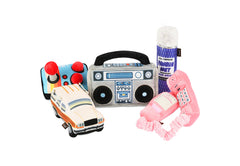Just like humans, cats also need to eat regularly. Without proper eating, health issues such as obesity can arise in a cat. Would you like to know how a cat should be eating properly? If you do, we can help. We will explain obesity, proper diets for cats, how to feed cats as well as mistakes you should avoid.
How to Tell if A Cat Is Obese
Before you tackle cat obesity, you need to know what obesity exactly is. Fat is an important part of a cat’s body. Too much fat, however, is not good. Obesity happens when there is excessive fat being accumulated inside a cat’s body. As a result, an obese cat will be heavier than they should.
If the body weight of your cat is 20% or more than their ideal "normal" weight, it is considered obese. In reality, according to the Association for Pet Obesity Prevention, almost 60 percent of all cats in the United States are overweight or obese.
What if you don’t know the ideal weight of your cat? Another way to tell if your cat is obese is to check their rib coverage. You should be able to feel the ribs of your cat behind their shoulder blades immediately. If you feel them, chances are your cat is not obese. Visit the vet to get a more accurate assessment.
Causes of Obesity
Have you ever wondered “why does my cat eat so much”? Eating so much is one of the many factors that may cause obesity. So let’s get into the next question: What causes obesity in cats? There are many factors that cause obesity in cats. Here are the four most common factors:
- Sedentary lifestyle
A sedentary and inactive lifestyle is the number one factor that causes cat obesity. Weight gain can be explained in one sentence: it happens when the calorie intake is more than the calorie burn. The excess calories will then be stored in fat. With excessive fat, comes obesity.
- Overfeeding
Can a cat eat too much? Well, of course. A cat that overfeeds is likely to develop obesity. This is especially true if the cat has a sedentary lifestyle and less activity. Overfeeding occurs even if you don’t realize it. There are a few occasions that lead to overfeeding. For instance: free feeding, too much food, treats.
- No changes in activity
Cats’ activities and energy change as they get older. These also affect how much food should a cat eat per day. To prevent your cat from being overweight, you need to reduce their food intake slightly, especially foods with high carbohydrates and fat.
- Health problems
Health problems, such as hypothyroidism and diabetes mellitus, can make a cat obese.
Health Risks of Obesity
Obesity shortens the life of a cat, making it more likely to become ill. Even being overweight, a cat's life expectancy decreases mildly. In cats, the death rate of obese cats (8-12 years) was 2.8 times higher than in lean cats.
Now, what are the health risks of obesity in a cat? There are many health risks. The following are some examples:
- Hypertension
- Heart disease
- Various types of cancer
- Osteoarthritis
- Urinary bladder stones
Obese cats that stop eating are at high danger for a life-threatening condition called hepatic lipidosis – a catastrophic liver disease. Other potential complications for cats ' obesity include skin issues and infectious diseases.
Feline Diet: The Natural Diet of a Cat
What does cat eat in their natural habitat? Well, since cats are carnivores, they eat small prey animals. The natural diet of a cat depends largely on where they live.
- Diet and nutrition
Just like humans, cats need to eat a certain amount of nutrition from their daily diet. In the case of cats, the average of daily nutrition intake is the following
- Protein (62.7%)
- Fat (22.8%)
- Mineral (11.8%)
- Carbohydrates (2.8%)
As for the question “How many calories should a cat eat in a day?” we cannot give you the exact answer. The reason is that the daily calorie intake a cat needs may be different from another. To get an accurate assessment, please visit the vet.
- Ingredients
Can cat eat tuna? After all, cats are often portrayed to eat tuna in the media. What about eggs? Can cat eat eggs? In feeding a cat, some ingredients can be used and ingredients that should be avoided. Let’s start with ingredients that should be used first.
Ingredients that can be used:
- Meats (turkey, chicken, pork or beef)
- Egg products
- Carbohydrates (oatmeal, cooked white rice, pasta, barley)
- Fiber (skinless cooked sweet potato)
- Various vitamins and minerals
Ingredients that should be avoided:
- Carbohydrate fillers
- Corn meal
-
Meat by products
The Best Way to Feed Your Cat
How much should a cat eat for a day? There are right and wrong ways to feed a cat. If you want to keep your cat healthy and happy, you need to feed them properly. Meaning, you need to be mindful of both the frequency and the amount of food you feed.
- Frequency
So, how many times a day should a cat eat? At the very least, a cat should be fed two meals a day. The meals should be approximately 12 hours apart. Since cats are a creature of habit, you need to stick with the feeding routine. However, breakfast, lunch, evening and dinner right before bedtime, is also an excellent choice. The stomach can be hyper-acidic to cause nausea if it elapses over 12 hours.
- Amount
What about how much should a cat eat per day? This is based on numerous factors, including the weight of a cat and its cat age, whether you feed moist cat food or dry cat food, whether your cat is pregnant or nursing or not. In general, a cat needs about 30 calories/pound per day. That means, if your cat’s weight is 9 pounds, they will need about 270 calories per day. This is an estimate. Again, consult with your vet to get the exact calculation.
How Can I Assist My Cat to Lose Weight?
- Food
1. Say No to Free-Selection Feeding. If you only have one cat and you carefully measure the food and do not refill the bowl when it's gone, free-feeding is a direct appeal to obesity. Food tastes great, which is the only stimulus many cats need to overeat.
2. Feed wet and dry food more. Dry food is high in carbon and does not provide your cat with moisture to feel satisfied.
3. Read your cat's food labels. Cats are carnivores and very low in carbohydrate demand. Therefore high-protein foods are required. Try not to treat your cat with food and use your favorite toy or cuddle time. Use your daily meals or a delicious little piece of dried liver or chicken if you have to treat.
- Exercise
1. Cats are hunters, so any game that you can imagine is a motion motivation for both your cat and the hunt. Laser points move like prey in an erratic way. Take a table tennis ball into a dry bath and see the fun.
2. Purchase or make a cat tree – the harder, the more maze, the better. Tuck surprise toys in the highest places, something that can encourage your cat to jump or climb. A boring cat (like a bored man) spends more time eating.
Common Mistakes in Feeding Cat
There are many mistakes done by cat owners in feeding cats. Well, if it’s only done once in a while, it may not be a problem. But if the mistakes have become a routine, it will affect the health of the cat negatively. Below, we have listed several common mistakes in feeding cats:
- Using dry food only
Lisa A Pearson, a California veterinarian focusing on feline medicine and nutrition and CatInfo.org's creator, states Cats are supposed to get their water with their food. Although mice, the normal food of a cat, is approximately 70% with water and canned food about 78% dry food is between 5% and 10% with water. That is why “canned foods help to maintain the good hydration of your cat,” Pierson says. “Think of canned food several times a day like hosting your cat's bladder.”.
- Not offering enough water
Water, essential for life, accounts for between 60% and 70% of the body weight of an adult cat, according to experts of ASPCA. A severe water deficiency may have a critical impact on animals, leading to severe disease or death.
- Adding garlic for whatever reasons
Some think it's cool, sprinkling garlic added to kitty's food is the best alternative to foil those shy Parasites. According to the Joe Bartges, Professor of Medicine and Nutrition in the College of Veterinary Medicine, at the University of Tennessee, there is no evidence that garlic, including intestinal worms or fleas, prevents any parasitic infestation. Moreover, garlic can kill the red blood cells of the cat if provided at an unusually high dose.
- Going vegetarian or vegan
Cats are compulsory carnivores, which means that they have to eat meat and animal organs to survive. For example, amino acid taurine is found in animal tissue only. A cat can experience heart problems, blindness and even death without taurine.
- Nutrition deficiencies
Making cat food from scratch, some people fail to balance the meat with the correct amount of calcium, forgetting that a cat is eating both the meat of his prey and the bones of his prey. An exaggerated diet in tuna, liver or liver oil (such as liver oil of cod) may lead to toxic vitamin A, causing to bone and articular pain, fragile bones, and dry skin. An overly rich diet in raw fish can kill Vitamin B1, causing muscle weakness, seizures, or damage to the brain. "If a feline carer wants to prepare meals for her animal, they should follow a well balanced recipe," suggests Pierson.
Have you done at least one these feeding mistakes? Well, if you did, please never let yourself fall into the same hole over and over again.
Now that you understand cat obesity, proper cat diets and how to feed them, you should be able to take care of your beloved better, especially on how they eat.






